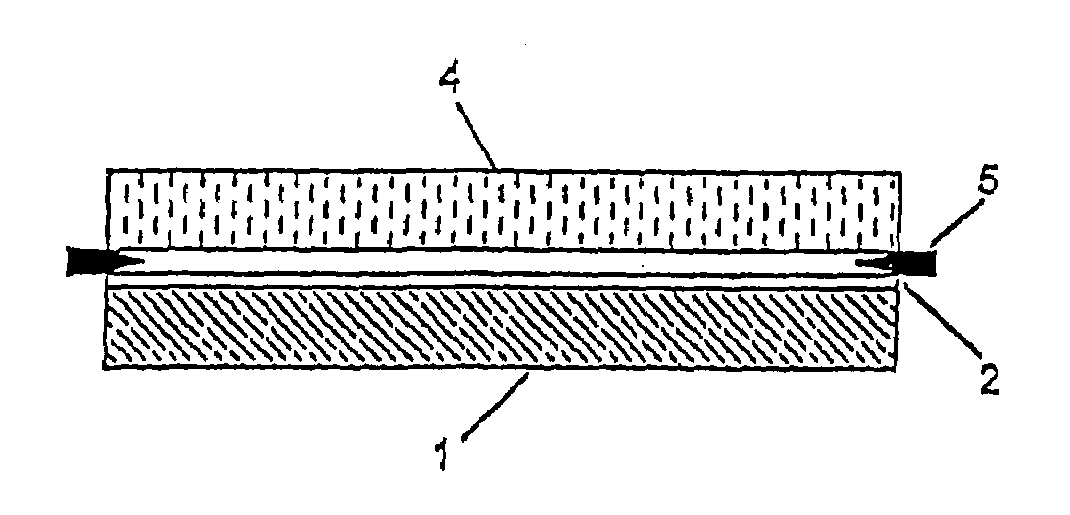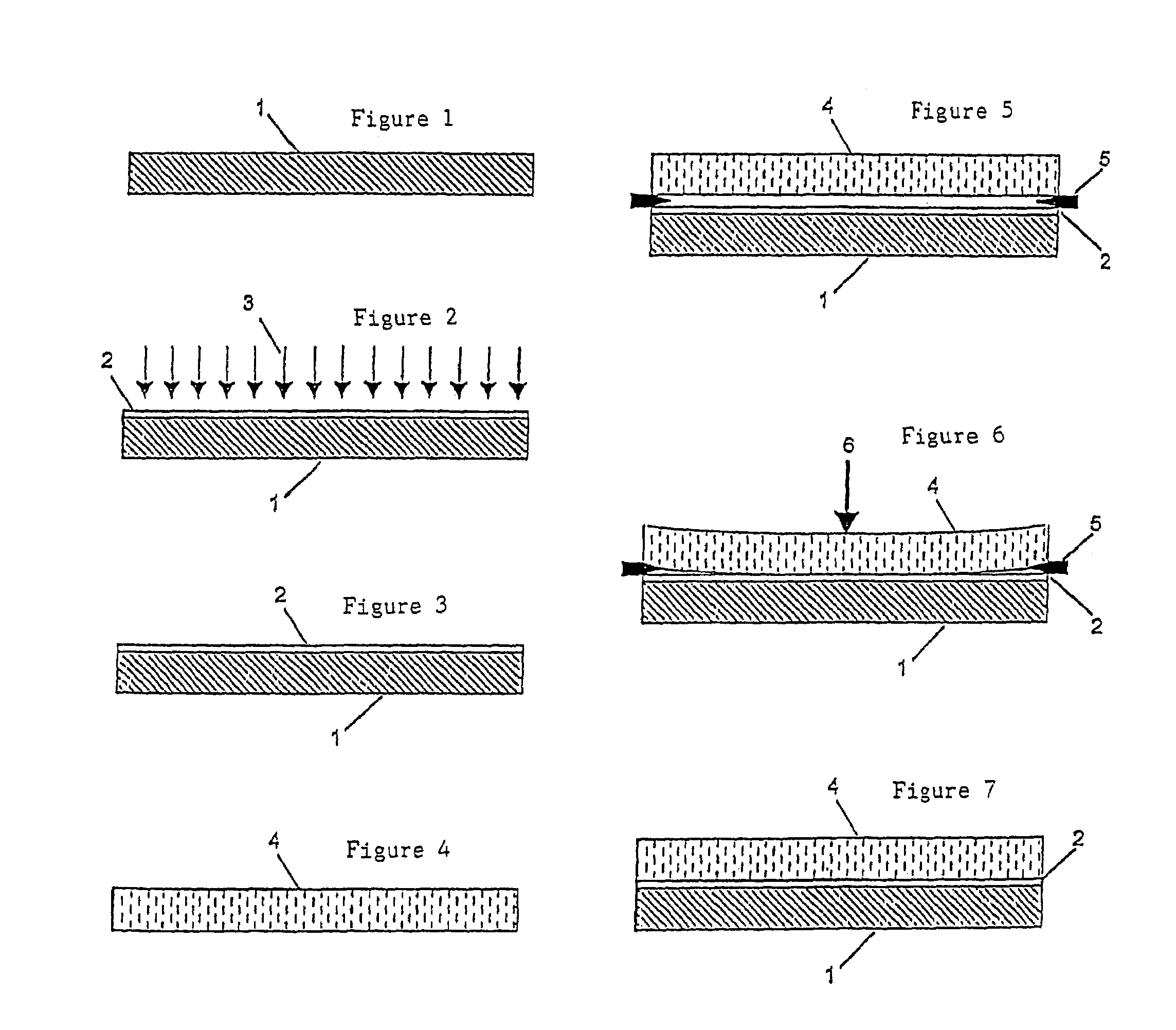Method of wafer/substrate bonding
a technology of substrate and bonding, which is applied in the direction of basic electric elements, electric devices, solid-state devices, etc., can solve the problem of virtually impossible to remove all hydrogen content, and achieve the effects of high bonding strength, good bonding quality, and convenient application
- Summary
- Abstract
- Description
- Claims
- Application Information
AI Technical Summary
Benefits of technology
Problems solved by technology
Method used
Image
Examples
Embodiment Construction
[0040]FIG. 1 illustrates a first component in the form of a wafer 1 to be bonded for example, a semiconductor, ceramic, glass, or other materials, whereas FIG. 4 illustrates a second component in the form of a glass wafer 4. A suitable type of glass material is borosilicate glass or other types of glass material having alkaline ions may be used. In this embodiment, Pyrex 7740 glass is used as the glass wafer 4 for the bonding operation.
[0041]In this embodiment, silicon will be used as an example for the first wafer 1. The conditioning of the silicon wafer 1 may take the form of polishing the surface for the bonding operation so that the surface is a “mirror-polished surface”, which has a surface roughness of typically in the nanometer range. In addition, prior to introduction of the silicon wafer 1 into a deposition chamber, the surface is ultrasonically cleaned by means of a cleansing solvent, for example nitric acid, ammonium hydrogen peroxide, RCA cleansing solution (which can be...
PUM
| Property | Measurement | Unit |
|---|---|---|
| temperature | aaaaa | aaaaa |
| temperature | aaaaa | aaaaa |
| temperature | aaaaa | aaaaa |
Abstract
Description
Claims
Application Information
 Login to View More
Login to View More - R&D
- Intellectual Property
- Life Sciences
- Materials
- Tech Scout
- Unparalleled Data Quality
- Higher Quality Content
- 60% Fewer Hallucinations
Browse by: Latest US Patents, China's latest patents, Technical Efficacy Thesaurus, Application Domain, Technology Topic, Popular Technical Reports.
© 2025 PatSnap. All rights reserved.Legal|Privacy policy|Modern Slavery Act Transparency Statement|Sitemap|About US| Contact US: help@patsnap.com



